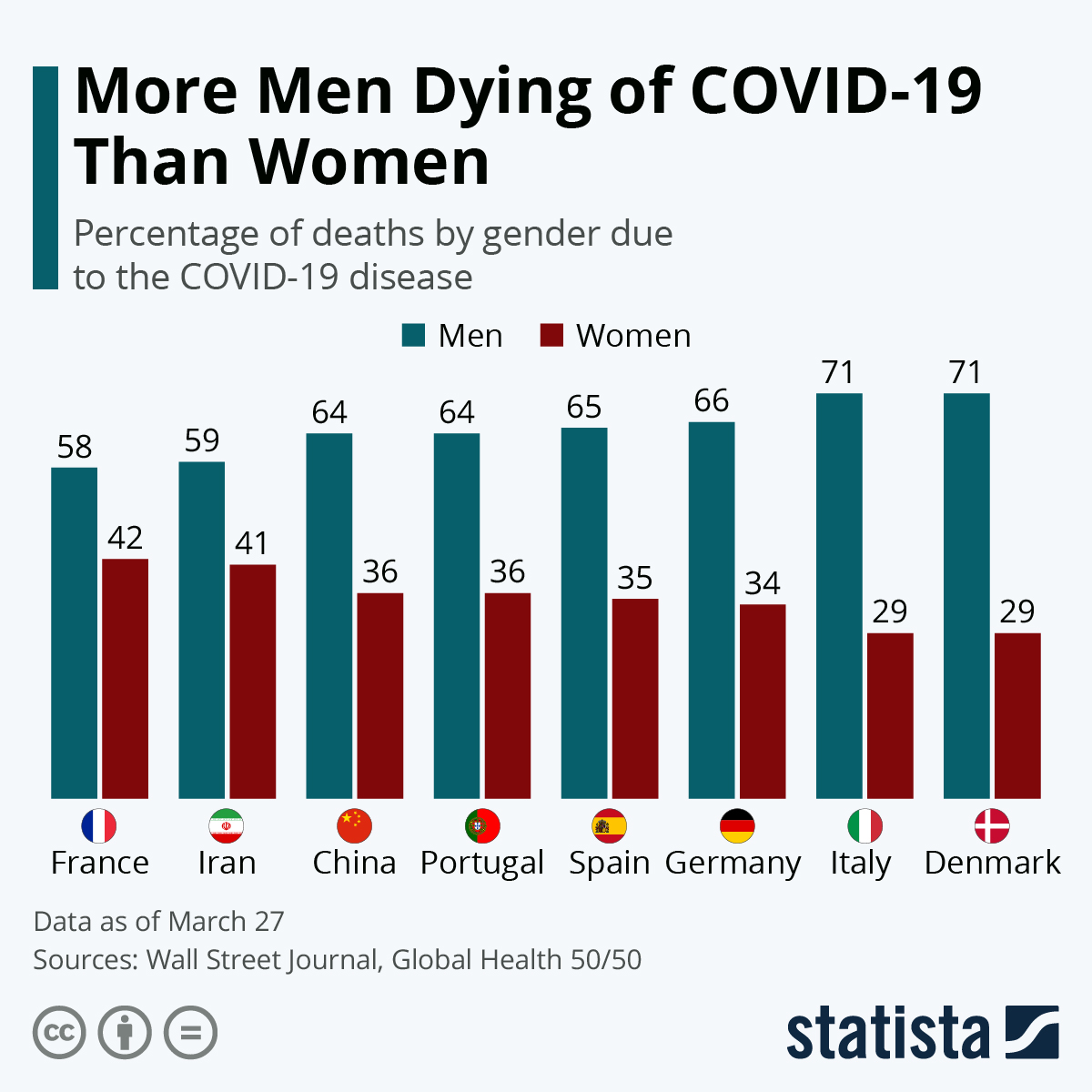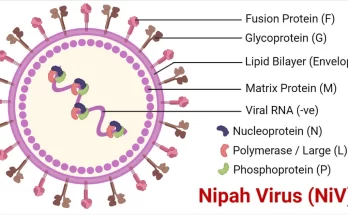When SARS COV2 virus first identified as the causative agent of deadly COVID 19 disease scientists wanted to find how the virus attack human cells, and within few days they decoded its genome and uncovered the way these viral particles enter human cells. According to their findings the virus first attach to an enzyme and enter the cells using this enzyme. Scientists found this enzyme as angiotensin-converting enzyme 2 (ACE2) available on the cell membranes of many cell types. So any cell that has ACE2 on its membrane is susceptible to this virus.
One of the most remarkable observation with COVID 19 disease was that males are more vulnerable to this virus than females. As given in the graph below, in many countries men are at a significantly higher risk of having severe symptoms and dying when compared to women. A recent study study, published in the European Heart Journal on 11th May (Monday), has been able to give a clear explanation to this observation. The study done by a team headed by Dr Adriaan Voors (MD-PhD), Professor of Cardiology at the University Medical Center Groningen (The Netherlands) was aimed at finding the effect of renin–angiotensin–aldosterone system (RAAS) inhibitors on ACE2 concentrations in blood plasma.
 You will find more infographics at Statista
You will find more infographics at Statista
Some recent research indicated that RAAS inhibitors might increase concentrations of ACE2 in plasma – the liquid part of blood – thereby increasing the risk of COVID-19 for cardiovascular patients taking these drugs. But this study was unable to provide definitive evidence on the effects of RAAS inhibitors in patients with COVID-19. Since this research was done using heart failure patients, and the patients did not have COVID-19, the researchers have been unable to provide a direct link between the course of the disease and ACE2 plasma concentrations.
One of the most remarkable findings in this study was the difference in plasma ACE2 concentrations among males and females. According to the results of this study plasma concentration of ACE2 is higher in males than in females. Researchers speculate that this finding might help to explain why men are more vulnerable to COVID-19 than women.




